Gaa-bigooshkaaning Round Dance
The University of Michigan Native American Student Association (NASA) will host its first traditional Round Dance on November 15, 2025.
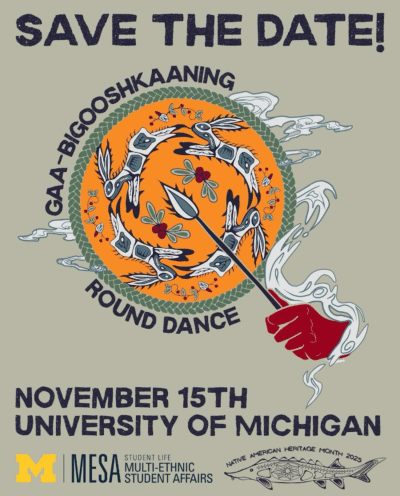
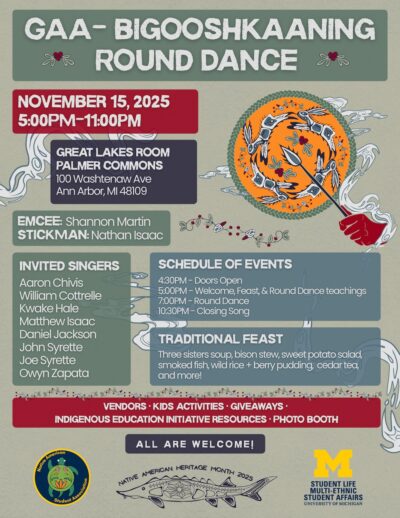
Artist: Elladiss Winter, Sault Tribe of Chippewa Indians, U of M student
Artist Statement: “November signals the close of cranberry harvest season and makes me think of a story I was told in childhood about waabooz and their journey in search of these berries. It’s a story about patience and learning. These teachings felt especially fitting for a round dance organized by our student community, and I hope I was able to convey them in this year’s art.”
Honoring “Gaa-bigooshkaaning”
Hear how to say Gaa-bigooshkaaning: Gaa-bigooshkaaning
The event takes inspiration from Gaa-bigooshkaaning (‘the place of the pummeling’,) a name used by the Potawatomi who lived in villages along the Huron River in what is now Ann Arbor. The name refers to a place where community members gathered each year to pound and process corn near a mill. As settlers arrived and began processing wheat, the landscape and traditions changed, but the name and its story remain an important part of local Anishinaabe heritage.
The name “Gaa-bigooshkaaning” is documented in Michigan History Magazine, a publication of the Michigan State Historical Society and its affiliates, the Michigan Pioneer and Historical Society and the Michigan Historical Commission, in 1964 (see p. 31). It also appears in the Ann Arbor News article, Let’s Take A Look At Urban Renewal, July 3, 1958. Most significantly, the name remains in living memory, and both the Huron and Pokagon language departments of the respective Potawatomi tribes in Michigan continue to teach it to their students.
For additional information about the Native American history of the Ann Arbor area, see On Anishinaabe Land: Treaties with Indigenous Nations and the Founding of Ann Arbor.
Reviving the Spirit of the Pummeling Dance
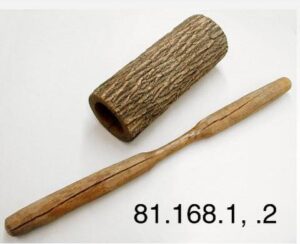 There are many ways that the Anishinaabe tended their relationship with the land and plants around them. Many seeds were harvested and processed for mixing with other foods for storing over winter. The term “bootaage” means to grind something up, and a “bootaagan” and “bootaaganaatig” were used for pounding corn, wheat or other grains. An example of an Odawa bootaagan made around 1880 in Cross Village appears here. The terms “bigooshkaan” and “biisiboojigan” were used to refer to the place where milling happened.
There are many ways that the Anishinaabe tended their relationship with the land and plants around them. Many seeds were harvested and processed for mixing with other foods for storing over winter. The term “bootaage” means to grind something up, and a “bootaagan” and “bootaaganaatig” were used for pounding corn, wheat or other grains. An example of an Odawa bootaagan made around 1880 in Cross Village appears here. The terms “bigooshkaan” and “biisiboojigan” were used to refer to the place where milling happened.
As recently as 1967, Anishinaabe people were still performing the Corn Grinding Dance at powwows in Ann Arbor. A photograph of one such dance, held at a Veterans Powwow on campus, can be found in the American Philosophical Society Archive.
Ethnomusicologist Gertrude Kurath also described the Corn Pounding Dance in her book Michigan Indian Festivals. In the 1950s and 1960s, Kurath worked with University of Michigan alumna and former Little Traverse Odawa tribal chair Frank Ettawageshik’s mother, Jane Ettawageshik, to document a version of the song performed by Benedict Quigno, a Potawatomi from the Mount Pleasant area, along with five women dancers. Quigno learned the song from Dan Pigeon and Tony Trujillo, and the lyrics mention both “mandaminaboo” and “daminabo,” reflecting a beautiful blend of Potawatomi, Odawa, and Ojibwe language and tradition.
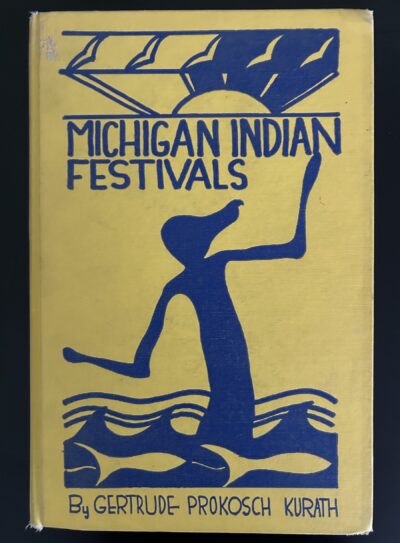
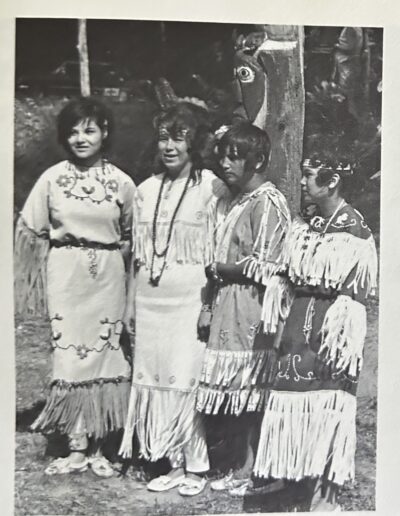
Images from the book, Michigan Indian Festivals, by Gertrude Kurath.
Isabella Indian Reservation, June 25, 1966, “Corn Maidens.”
The following Corn Dance song was also taken from the book (page 63) and has been re-created with the help of Sheila Feay-Shaw using the original notes and lyrics.
Listen to the song: Daminabo
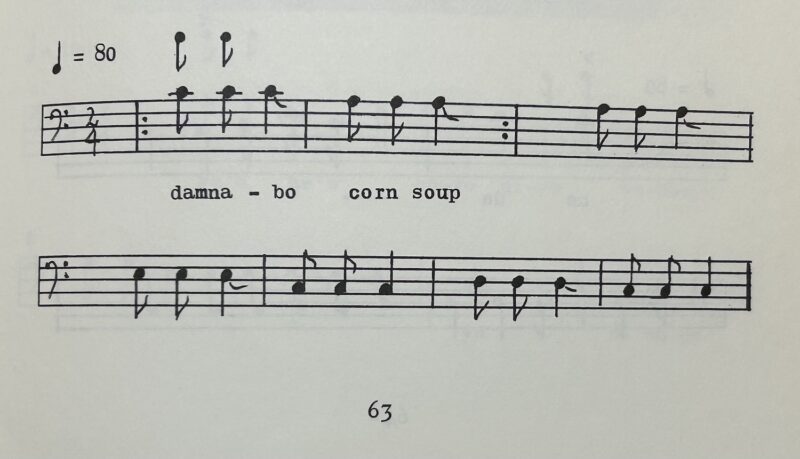
Continuing the Circle
The Potawatomi, Odawa, and Ojibwe were all signatories to the 1817 Treaty of Fort Meigs which ceded over 4.5 million acres of land in what is now Ohio, Indiana, and Michigan. Some of this land was specified to support a school which became the University of Michigan and moved to Ann Arbor in 1837.
The campus is divided by the Huron River where Indigenous people have been living for thousands of years. There has always been a rich mix of people sharing their dialects, songs, and dances in Ann Arbor and it is great fun to see that spirit alive again.
